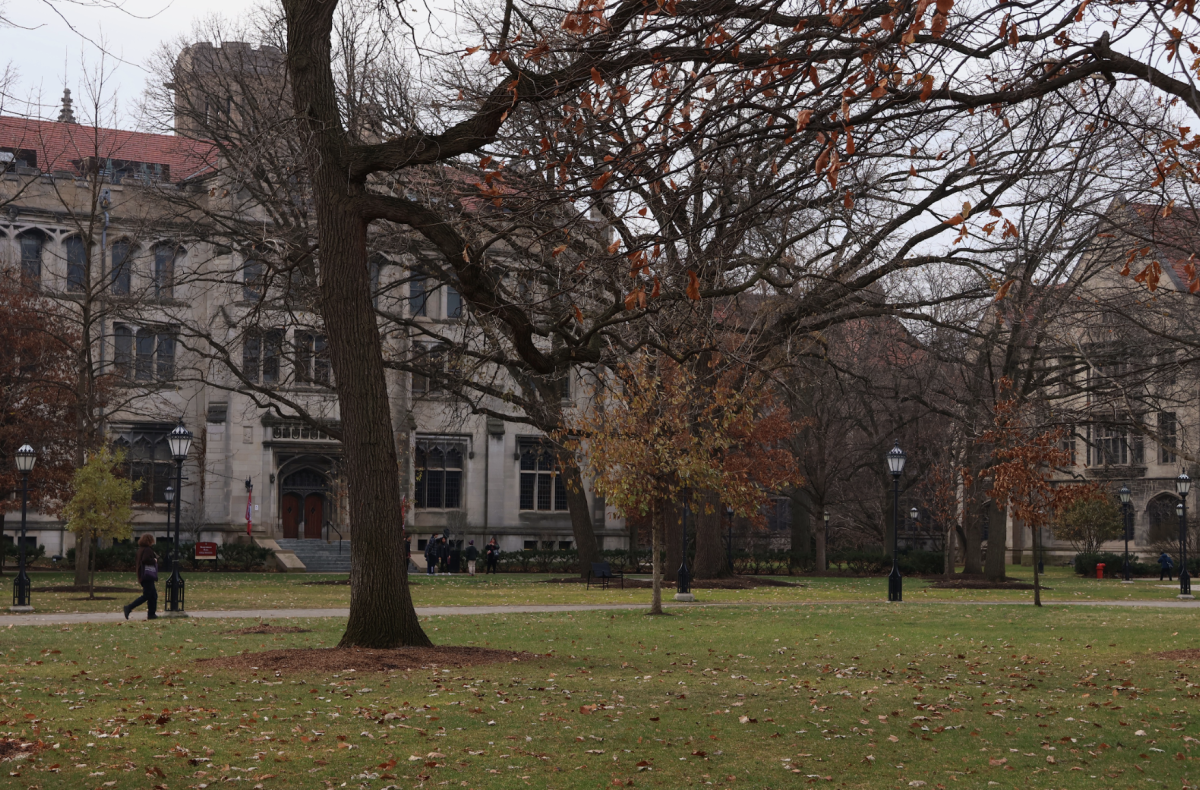The 2023–2024 academic year marked the third Common Data Set (CDS) report that the University of Chicago has completed and released. The CDS, an annual survey jointly administered by the College Board, U.S. News and World Report, and educational services company Peterson’s, is meant to standardize data reporting among colleges and universities.
Before 2022, UChicago and Columbia were the only two schools in the nation’s top 20, ranked by U.S. News, not to complete the survey. Columbia also completed the CDS for the first time in 2022.
While much of UChicago’s CDS report contains previously available data reported by the Integrated Postsecondary Education Data System, the report does give additional insight into admission numbers. The Maroon conducted an analysis of the last 10 years of publicly available admission data, including the additional data provided by the CDS report, and found that: the admission rate has decreased despite applications and enrollment increasing; women have a lower admission rate as compared to men, a gap that has been growing; and the University as a whole has seen a decrease in the white student population and an increase in the International student population.
The admission rate has continued to drop steadily.
Chicago’s admission rate has continued to fall each year, the CDS reports show. This follows a decreasing trend since at least 2006 when the admission rate was 38 percent. The admission rate for 2023 was 4.8 percent, a decrease of almost 50 percent from 2014 when it was 8.4 percent. This decrease is especially notable because, while other institutions have seen decreasing admissions rates as well, most of those other institutions have kept their undergraduate population sizes constant. UChicago, on the other hand, has seen both a decreasing admissions rate and an increase in its undergraduate population.
While the undergraduate population has increased by 25 percent in the last 10 years from 5,608 in 2014 to 7,489 in 2023, the number of applications increased by even more in the same period. UChicago is admitting more students than before—but not enough to keep pace with the rising number of applications, ultimately leading to a decreasing admission rate.
There is also a large gap in the acceptance rate between men and women, which has slowly grown over the last 10 years. In 2023, the acceptance rate for men was 5.7 percent and only 4.0 percent for women, a 35 percent difference which has grown from only an 8 percent difference in 2014. This current gap is higher than in every Ivy League school except Brown.
Most universities receive more women applicants than men, as does UChicago. Women applicants have outnumbered male applicants since at least the 2014–2015 academic year, and the gap has only grown since then. Universities often aim for a balanced number of admitted men and women which paired with more women applicants, leads to a lower admission rate for women. However, at UChicago, there are both more women applicants and more men than women who have been admitted since 2017, leading to a particularly low admit rate for women in recent years.
In 2022, the CDS began to ask schools to report non-binary gender data if collected. UChicago reported that 22 non-binary students applied but did not provide any data for how many of those applicants were admitted. In 2023, nine reported non-binary students applied but none were reported to be admitted.
With the admission rate declining, the yield rate has continued to increase in the last three years from 83 percent to 88 percent.
UChicago has admitted an increasing share of international students across the last 10 years.
Accounting for both undergraduate and graduate students, there has been a remarkable decrease in white, and a large increase in international students (categorized as “Nonresident aliens” in reporting). The white share of students decreased from 50 percent in 2012 to 33 percent in 2022, while the international student population increased from 22 percent to 31 percent in the same period. The share of Hispanic or Latino students also increased from 6 percent to 11 percent but all other race/ethnic groups remained steady over this time.
As for the undergraduate student population, the makeup of the student body has not significantly changed in the last three years according to the CDS reports. In the 2023–2024 academic year, the most recent reported year, 31 percent of students were white, 20 percent were Asian, 17 percent were Hispanic/Latino, 7 percent were Black or African American, 7 percent were two or more races and less than 1 percent were American Indian, Alaska Native, Native Hawaiian or other Pacific Islander. 16 percent of students were international students.
In the last three years, the CDS Report has shown a change in the role that racial/ethnic status plays in UChicago’s admission decision. In the 2021–2022 report, Racial/ethnic status was listed as “considered” in admission decisions. In the 2022–2023 report, racial/ethnic status was then listed as ‘not considered.’ In the 2023–2024 report, racial/ethnic status is no longer a factor listed at all. Despite these changes, the race/ethnic composition of undergraduate students has remained steady recently. This change in admission considerations is undoubtedly an impact of the Supreme Court’s 2023 decision to bar the use of affirmative action in college admissions. The long-term effects of this ruling on diversity on college campuses remain to be seen.
Notable exclusions from UChicago’s CDS report include the number of students who were waitlisted and ultimately enrolled as well as early decision numbers. Most other peer institutions report these numbers in their CDS report.
When asked about these findings, the University stated, “Our admissions process is holistic and each application goes through a contextual review process.” The University declined to answer specific questions regarding the gender gap in admission rate, the changing use of race and ethnicity in admission decisions, and the omission of waitlist and early decision numbers.
An exact date for the release of the 2024–2025 Common Data Set was not provided. The University shared that “the CDS typically is posted in the first quarter of the calendar year.”














